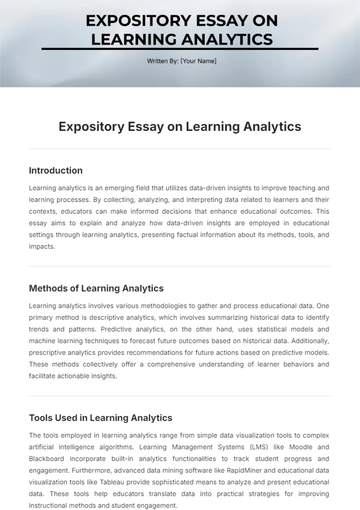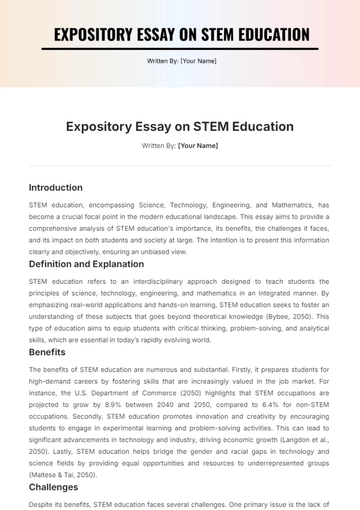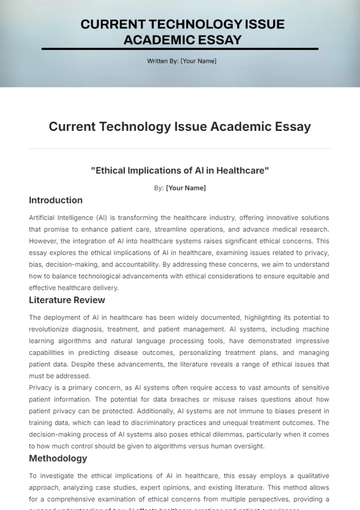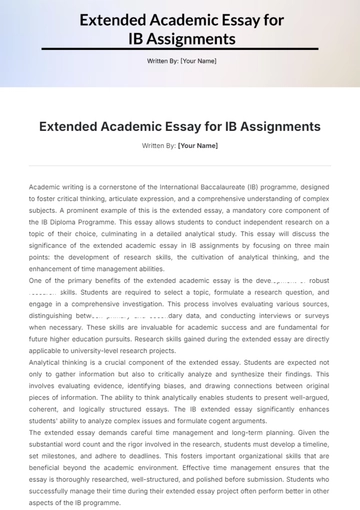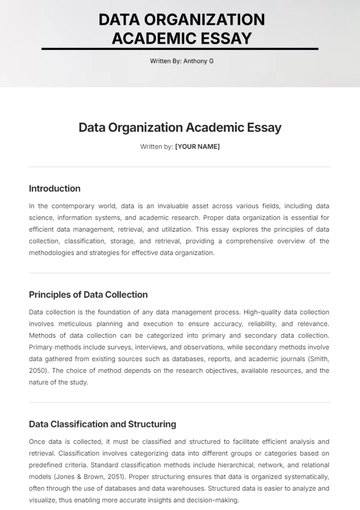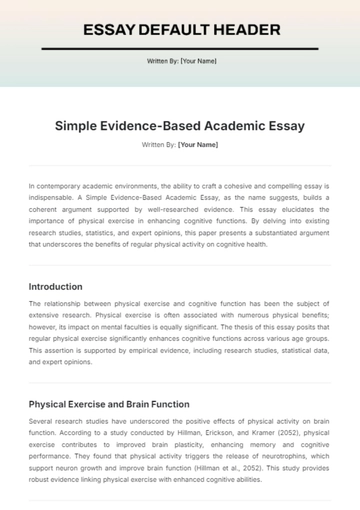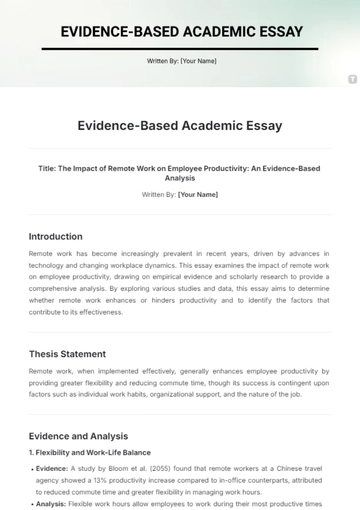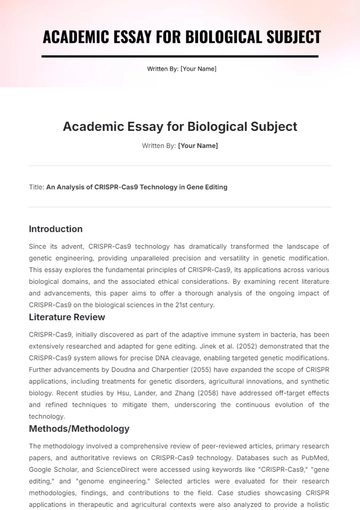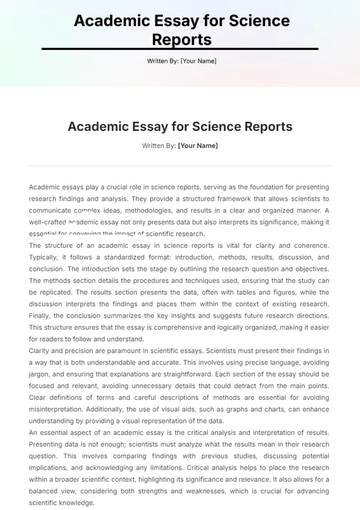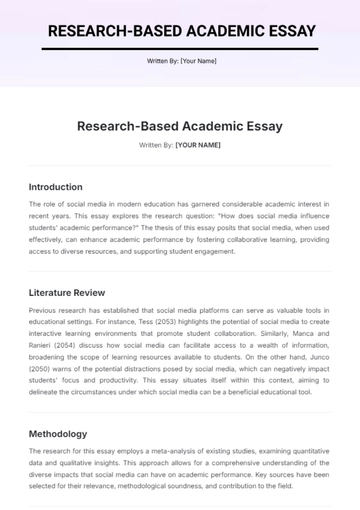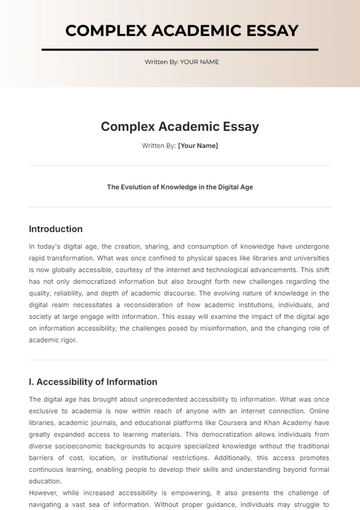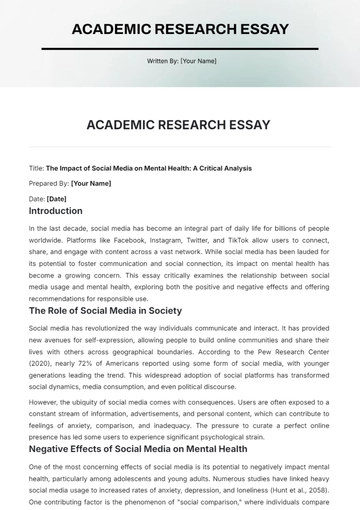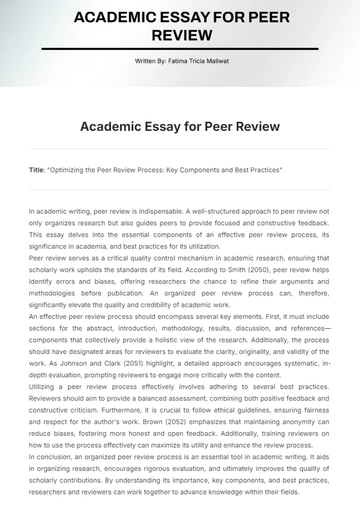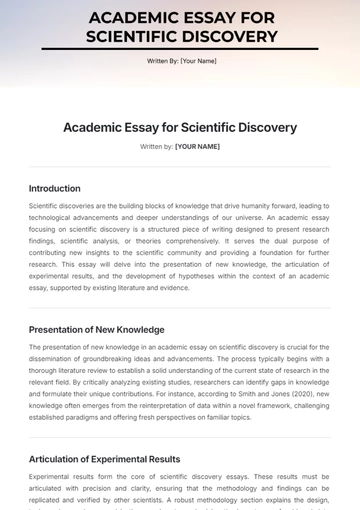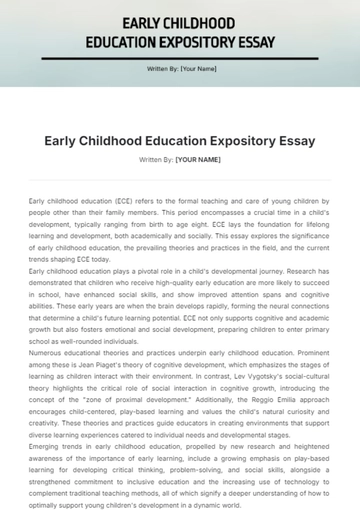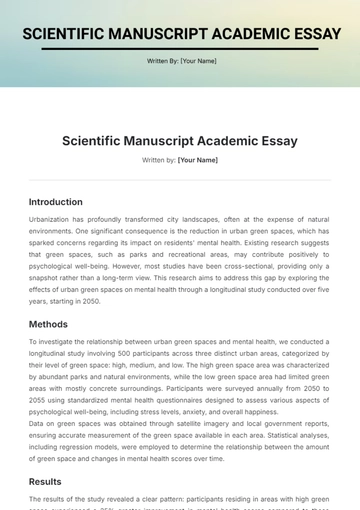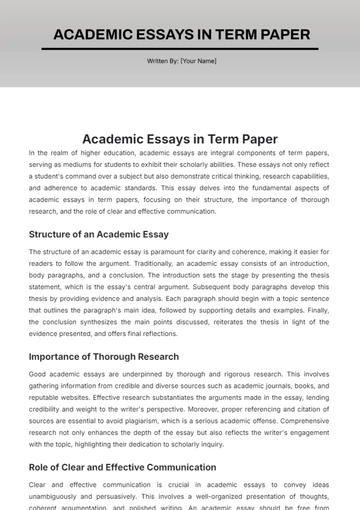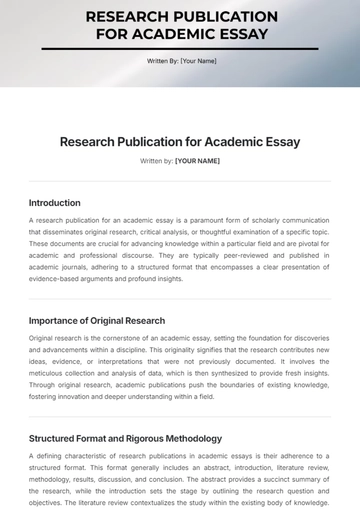Free Expository Essay on STEM Education
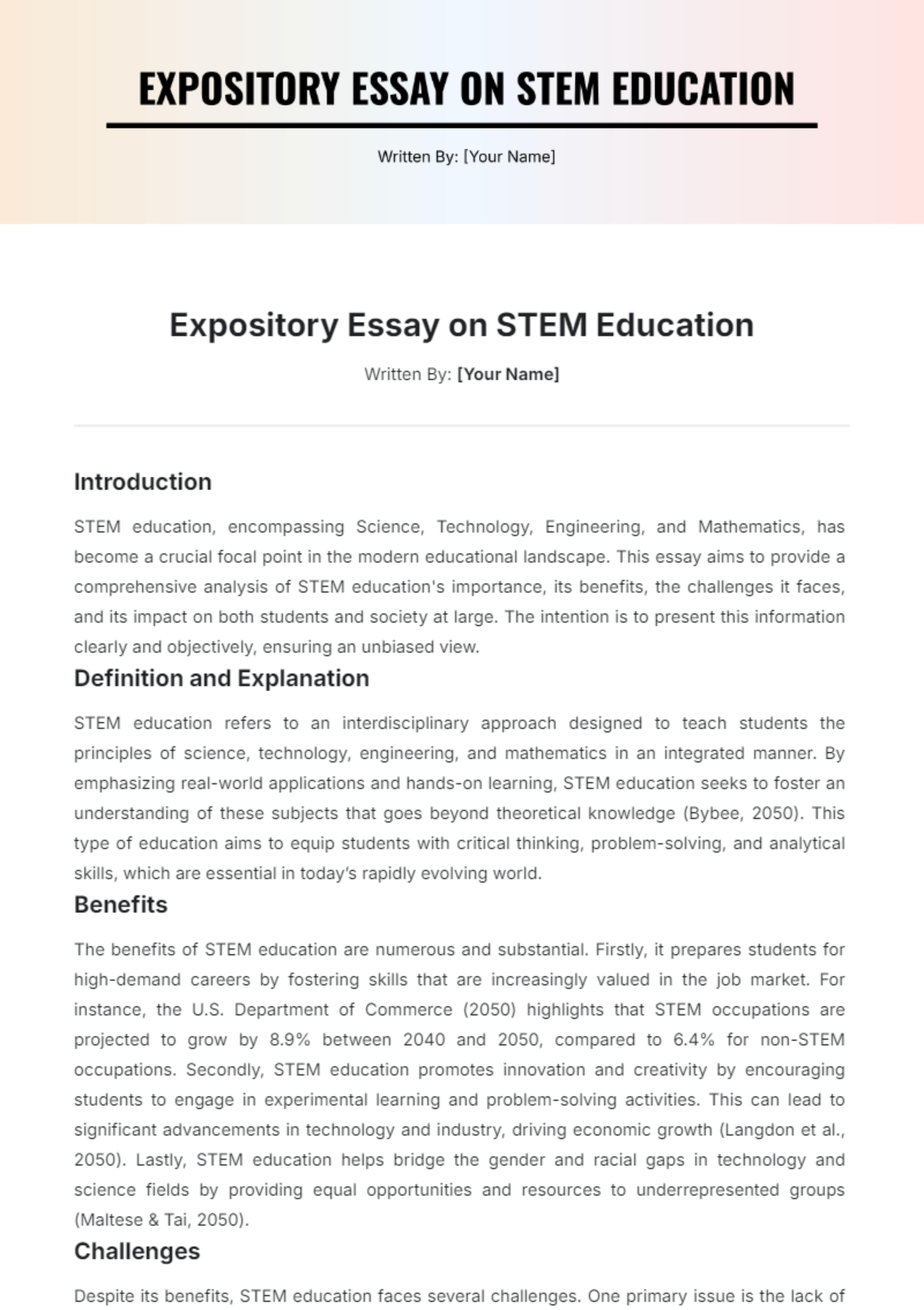
Written By: [Your Name]
Introduction
STEM education, encompassing Science, Technology, Engineering, and Mathematics, has become a crucial focal point in the modern educational landscape. This essay aims to provide a comprehensive analysis of STEM education's importance, its benefits, the challenges it faces, and its impact on both students and society at large. The intention is to present this information clearly and objectively, ensuring an unbiased view.
Definition and Explanation
STEM education refers to an interdisciplinary approach designed to teach students the principles of science, technology, engineering, and mathematics in an integrated manner. By emphasizing real-world applications and hands-on learning, STEM education seeks to foster an understanding of these subjects that goes beyond theoretical knowledge (Bybee, 2050). This type of education aims to equip students with critical thinking, problem-solving, and analytical skills, which are essential in today’s rapidly evolving world.
Benefits
The benefits of STEM education are numerous and substantial. Firstly, it prepares students for high-demand careers by fostering skills that are increasingly valued in the job market. For instance, the U.S. Department of Commerce (2050) highlights that STEM occupations are projected to grow by 8.9% between 2040 and 2050, compared to 6.4% for non-STEM occupations. Secondly, STEM education promotes innovation and creativity by encouraging students to engage in experimental learning and problem-solving activities. This can lead to significant advancements in technology and industry, driving economic growth (Langdon et al., 2050). Lastly, STEM education helps bridge the gender and racial gaps in technology and science fields by providing equal opportunities and resources to underrepresented groups (Maltese & Tai, 2050).
Challenges
Despite its benefits, STEM education faces several challenges. One primary issue is the lack of qualified teachers who are adept at delivering STEM curricula effectively. Many educators may not have the necessary training or resources to integrate STEM principles into their teaching (National Academy of Engineering and National Research Council, 2050). Additionally, there is the challenge of engaging all students, particularly those from marginalized communities, due to socioeconomic barriers and limited access to resources. Furthermore, maintaining student interest in STEM subjects can be difficult, as these areas can be perceived as challenging and inaccessible (Wang, 2050).
Impact
STEM education has a profound impact on students and society. For students, it enhances cognitive and analytical skills, encouraging a deeper understanding of complex concepts. This, in turn, prepares them for higher education and successful careers in technical fields (Maltese & Tai, 2050). On a societal level, robust STEM education programs contribute to the development of a skilled workforce capable of driving innovation and addressing global challenges, such as climate change and cybersecurity (Bybee, 2050). Moreover, by fostering a culture of inquiry and problem-solving, STEM education helps promote scientific literacy among the general population, empowering individuals to make informed decisions in their personal and professional lives.
Conclusion
In conclusion, STEM education is a vital component of the educational system due to its far-reaching benefits and significant impact. By providing students with essential skills and fostering innovation, STEM education contributes to personal and societal advancement. While challenges exist, addressing these issues through professional development for educators and increased accessibility can help realize the full potential of STEM education. Given its importance in shaping future generations, continuous support and improvement of STEM programs are essential for a thriving, modern society.
Bibliography
Bybee, R. W. (2050). The case for STEM education: Challenges and opportunities. NSTA Press.
Langdon, D., McKittrick, G., Beede, D., Khan, B., & Doms, M. (2050). STEM: Good Jobs Now and for the Future. U.S. Department of Commerce.
Maltese, A. V., & Tai, R. H. (2050). Pipeline persistence: Examining the association of educational experiences with earned degrees in STEM among U.S. students. Science Education, 95(5), 877-907.
National Academy of Engineering and National Research Council. (2050). STEM integration in K-12 education: Status, prospects, and an agenda for research. The National Academies Press.
U.S. Department of Commerce. (2050). STEM Jobs: 2050 Update. ESA Issue Brief #02-50.
Wang, M. T. (2050). Educational and motivational pathways to STEM: Comparing gender differences in Six Countries. Educational Researcher, 42(9), 452-468.
- 100% Customizable, free editor
- Access 1 Million+ Templates, photo’s & graphics
- Download or share as a template
- Click and replace photos, graphics, text, backgrounds
- Resize, crop, AI write & more
- Access advanced editor
The STEM Education Template from Template.net offers a fully editable and customizable design, perfect for educators and institutions. Easily tailor lesson plans, presentations, and worksheets to suit your needs. Editable in our AI Editor Tool, this template ensures efficiency and convenience, allowing users to make quick modifications and create personalized content for a seamless teaching experience.

